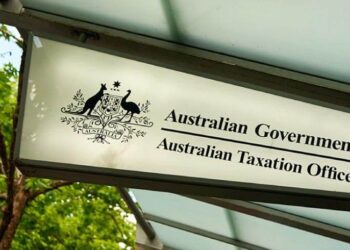In a recent article, Heffron managing director Meg Heffron explained that where an SMSF member with insurance dies before 65 there is potentially a special tax deduction available known as a future service deduction.
Ms Heffron explained that SMSFs with life or permanent disability insurance for their members usually claim a tax deduction each year for the insurance premiums paid.
“There’s a special rule that gives every superannuation fund, including SMSFs, a once only chance to change their mind about how they treat these premiums when a member dies and a death benefit is actually paid out, either as a lump sum or by starting a pension,” she said.
“The same special rule applies when a member becomes permanently incapacitated and a permanent incapacity benefit is actually paid out.”
The trustee can make a choice that instead of claiming a tax deduction for the insurance premium paid, they will claim a tax deduction for part of the benefit.
The deduction is called a ‘future service’ deduction, she explained, because it’s calculated in a way that tries to divide the death benefit into two parts between the number of years the member has been building up their super to date and the numbers of years until they turn 65.
“The tax deduction is the second part — the proportion that relates to their ‘future service’ that they didn’t live to complete,” she said.
She gave an example of Chris, who started building up his super at age 25 and died at 45 (20 years to go until he gets to 65).
“His ‘future service’ component will be roughly 20/40 (50 per cent) of his death benefit,” she explained.
Ms Heffron said in this example, the trustee might change their approach and claim a future service deduction as the deduction available now is very large.
“If Chris had $400,000 built up in super already and life insurance of $1 million, his total death benefit would be $1.4 million. The tax deduction would be $700,000. It doesn’t matter whether this amount is paid out as a lump sum or as a pension to his wife Carole or a mixture of the two, the total death benefit is still $1.4 million and the future service deduction would be $700,000,” she stated.
However, doing this means that the fund could never claim a tax deduction for insurance premiums again, she noted.
“If Carole also has insurance in the fund, for example, her premiums wouldn’t be tax deductible in the future. The same would apply if anyone else ever joined the fund in the future — this is where the choice is a ‘once off’ choice,” she cautioned.
“This is why most large funds don’t do it — for them, it makes more sense to claim tax deductions for the premiums every year.”
However, SMSFs can be in a unique position here, said Ms Heffron.
“They often have two members who both have insurance. If just one dies, it’s entirely possible that the survivor either won’t have insurance for much longer (given their age) or won’t need the insurance (since they will have claimed on their deceased spouse’s cover). Either way, they are often better off to make the switch,” she said.
There are some important traps, however, that can restrict many SMSFs from claiming this deduction, she warned.
“For a start, the benefit has to be paid ‘in consequence of the termination of a [deceased] member’s employment’. So it’s only possible if the deceased was still working at the time they died,” she noted.
The timing of premium payments can also be problematic for SMSFs.
“A recent case we put to the ATO highlighted some major challenges for most SMSFs in taking advantage of this deduction.
Our case was very similar to Chris and Carole. Our ‘Chris’ died unexpectedly in December 2020. He had been working up until his death and so met the work condition. A death benefit was paid for him in June 2021,” said Ms Heffron.
“In our example, both Chris and Carole had life insurance via their SMSF and the premiums were paid annually – in March and January respectively.
Because Chris died before his annual premium was due (March 2021), no insurance premiums were paid for him in 2020/21. But the normal premium was paid for Carole in January 2021.”
Ms Heffron said the ATO denied the future service deduction for that particular situation.
“Their rationale was that the trustee can’t “choose” to claim a tax deduction for the future service part of the death benefit paid in 2020/21 rather than the premium in 2020/21 because there was no insurance premium paid for Chris in that year,” she explained.
“It didn’t matter that the fund was still paying insurance premiums (for Carole) or that the fund had paid life insurance premiums for Chris over many years. They key was that nothing was paid for Chris in the relevant year.”
This means that its important to make sure premiums are paid regularly throughout the year, she said, to maximise the chance that a premium is actually paid for the deceased in the year their death benefit is paid.
“Or if premiums are paid annually, make sure the anniversary date is July and pay the death benefit in that same financial year. Otherwise, most SMSFs will miss out on this benefit,” she added.



Claiming this deduction requires a little extra effort and the prerequisites make it difficult to plan with certainty however paying insurance premiums monthly, rather than yearly, is a good start. I have successfully claimed several where the difference in deduction was over $700k. We’ll worth the effort.